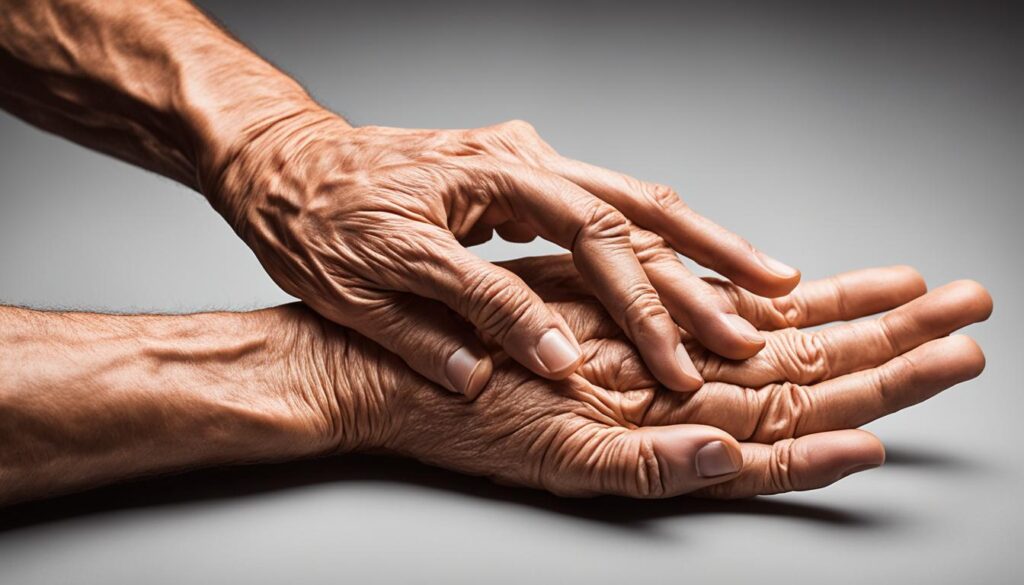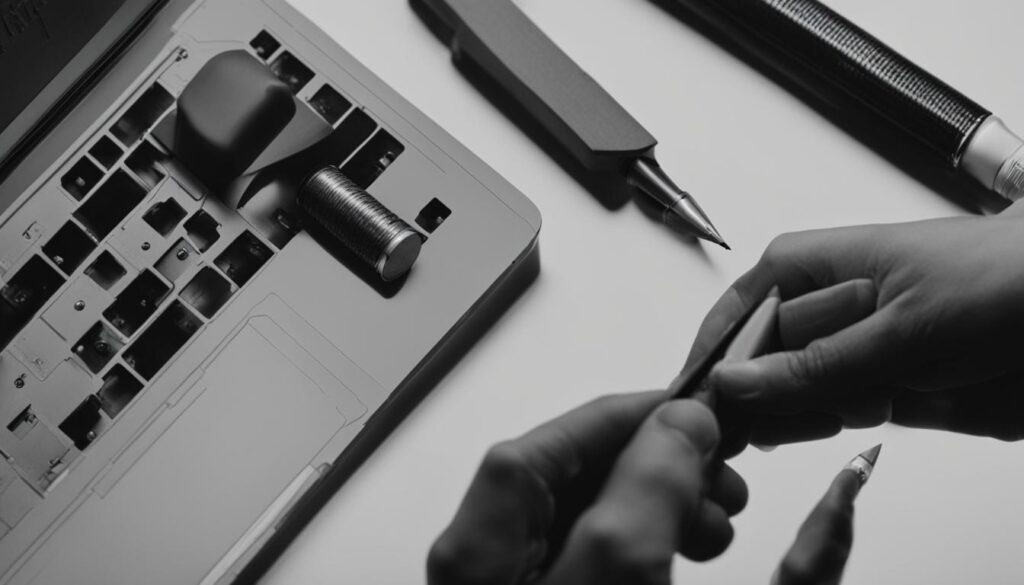Hand and finger cramps are generally due to involuntary muscle contractions, commonly known as muscle spasms, which stem from various causes, including muscle overuse or an underlying health condition. These spasms prevent the muscle from relaxing and can be quite painful. Hand cramps arise from the abnormal interruption in the normal muscle contraction process, which involves a network of brain, spinal cord, and muscle communications, along with chemical interactions. When disrupted, this process can lead to spasms and cramping, often accompanied by muscle twitching during rest or after a contraction.
Multiple factors can cause hand cramps, such as electrolyte imbalances, dehydration, high-temperature exercises, overuse injuries, diabetic stiff hand syndrome, arthritis, and other underlying conditions. These conditions can affect muscle function through changes in calcium, sodium, magnesium, and potassium levels, which are crucial electrolytes for muscle function. Home remedies can help alleviate symptoms through activities like stopping cramp-inducing actions, stretching, massaging the affected muscle, applying heat or cold, and increasing fluid intake.
Key Takeaways
- Hand and finger cramps are often due to involuntary muscle contractions which can stem from various causes such as muscle overuse or an underlying health condition.
- Disruption in the brain, spinal cord, and muscle communication can lead to muscle spasms and cramping.
- Multiple factors such as electrolyte imbalances, dehydration, exercises in high temperatures, overuse injuries, diabetic stiff hand syndrome and arthritis can cause hand cramps.
- Home remedies such as timely rest, stretching, and maintaining hydration can offer significant hand and finger cramp relief.
Understanding Hand Cramps: Causes and Symptoms
Cramps in the hands and fingers may seem like a minor inconvenience. However, frequent cramping can cause significant discomfort, impacting daily activities and quality of life. By exploring the common hand and finger cramp causes and understanding how to attain muscle cramp relief, it’s possible to take the first proactive steps towards managing and preventing such discomfort.
Electrolyte Imbalances and Their Impact on Muscle Function
Vital electrolytes such as calcium, sodium, magnesium, and potassium regulate nerve and muscle functions and must be balanced for proper muscle operations. Various factors can cause electrolyte imbalances, affecting muscle function and leading to painful hand cramping. For example, kidney disease, prolonged vomiting, and certain medications can disrupt these key electrolyte levels and contribute to cramping.
The Role of Hydration and Exercise in Cramp Prevention
Hydration is an essential, often overlooked element in maintaining muscle health and preventing cramps. Our muscles require adequate hydration to function correctly, and exercising in high temperatures without sufficient intake can impair muscle function and induce cramps. Recognizable symptoms of dehydration include bad breath, fever, chills, dry skin, and headaches.
Identifying Focal Dystonia and Its Effects on Muscle Contractions
Not all cramps are alike, and recognizing the types of cramps can help specify and target the treatment. Focal dystonia, for instance, refers to muscle cramping that is localized to a specific part of the body. This type of cramping occurs from abnormal muscle contractions caused by disruptions in the brain-muscle communication pathway. If you suspect focal dystonia, consulting a healthcare professional is crucial.
Hand and Finger Cramp Relief
Those who struggle with hand and finger cramps know how disruptive and inconvenient these can be. With aches shooting through the fingers and hands, daily tasks can become cumbersome and difficult. However, there are numerous ways to procure hand and finger cramp relief at home before needing to seek professional help.
Here are some effective home remedies:
- Pausing or stopping the activity causing the cramp
- Engaging in stretches and exercises designed specifically for the hands and fingers
- Applying warmth to the cramped area to relax the muscle, or cold to numb any pain
- Using over-the-counter nutrients, such as vitamins or supplements, to provide relief

While these measures can usually offer immediate relief, they are not substitutes for a long-term solution, nor should they replace medical advice. It’s important to remember that persistent hand cramps, or those that interfere significantly with day-to-day activities, warrant a visit to a doctor to rule out any serious, underlying conditions causing these symptoms.
However, don’t be disheartened if you face recurring, non-serious cramps. It’s common, and there are ways to combat this. Essential self-care practices such as staying hydrated, stretching periodically, keeping circulation in check, and maintaining good hand strength can go a long way towards preventing unnecessary discomfort.
Always remember, the key to hand and finger cramp relief lies in prevention itself. Being proactive about your health can significantly reduce the chances of hand and finger cramps interfering with your life.
Natural Remedies and Home Solutions
When it comes to hand and finger cramp relief, natural remedies and home solutions have proven to be quite effective. From tension-reducing exercises to heat and cold applications, and even dietary adjustments, there are many strategies to help manage and prevent this discomfort.
Stretching Techniques That Alleviate Tension
Few things are as beneficial to muscle health as regular stretching. By creating a routine that includes hand and finger stretching techniques, one can achieve increased flexibility and reduced muscle tension, thus providing a natural remedy for muscle cramp relief. Extending the fingers wide and creating circular motions with the wrists are a few examples of simple yet effective exercises to add to your daily routine.
The Benefits of Heat and Cold Applications
In addition to stretching, applying heat or cold to the affected area can also help manage muscle cramps. A warm compress can cause muscles to relax while simultaneously promoting increased blood flow to the area. Conversely, a cold compress can effectively minimize inflammation and provide significant pain relief. However, it is important to always use a barrier, like a cloth, between the skin and hot or cold pack to avoid potential skin damage.
Supplements and Vitamins That Can Help
Lastly, while stretching and heat and cold applications can offer immediate relief, there are other long-term strategies to consider. Certain supplements and vitamins may help prevent muscle cramps, especially for individuals with specific nutritional needs. Incorporating foods rich in magnesium such as leafy greens, legumes, and whole grains into your diet is a natural strategy that can minimize the occurrence of cramps. Moreover, vitamin D supplements can also prove beneficial for muscle health, subject to your healthcare provider’s advice.
Prioritizing a proactive approach and embracing a combination of these natural remedies, stretching techniques, heat and cold applications, as well as supplements and vitamins for muscle cramp relief, can reduce the incidence of muscle cramps and also alleviate their intensity when they do occur.
Exercises for Stronger, More Flexible Hands
Hand and finger cramp exercises, along with muscle strengthening and hand flexibility drills, can provide significant relief from discomfort and help prevent future episodes. They work towards enhancing your hand’s mobility and strength, ultimately leading to more resilient and flexible muscles.
Different exercises cater to varying needs, preferences, and mobility levels. Let’s explore some exercises that can improve your hand health and flexibility:
| Exercise | Description | Benefits |
|---|---|---|
| Ball Squeezes | Hold a stress ball in your hand and squeeze it tightly for a few seconds before releasing. Repeat this for 10-15 cycles per hand. | Improves muscle strength and reduces stiffness. |
| Finger Bends | Hold your hand flat and then bend each finger at a time towards the palm. Keep each for a few seconds before releasing. | Enhances finger flexibility and lessens the risk of cramping. |
| Thumb Touches | With your hand open, touch the thumb to each fingertip, making the shape of an “O”. Hold each touch for a few seconds before moving to the next. | Improves thumb mobility and flexibility, reducing stiffness. |
| Wrist Stretch | Extend the arm with the palm facing down. With the other hand, gently pull the fingers down to stretch the forearm. Switch hands and repeat. | Relieves wrist and forearm tension, mitigating the possibility of cramps. |
“Consistency is key when it comes to exercises. Regular practice not only alleviates existing discomfort but also serves as a preventative measure against future hand and finger cramps.”
Lastly, low-impact exercises such as swimming, cycling, or walking can also keep joint-friendly needs in check, particularly beneficial for individuals with conditions like rheumatoid arthritis.
Professional Treatments and When to Seek Help
When hand and finger cramps become a chronic issue, it may be a sign that professional treatments are necessary. Depending on the root cause, these treatments could involve prescription medication, specialized exercises, or surgical procedures. From arthritis to carpal tunnel syndrome, certain underlying conditions require tailored therapies to manage symptoms and restore function.
Equally as important is recognizing when to seek help. Persistent or worsening symptoms may be a sign of more severe underlying conditions. Recognizing these signs early on can be life-saving.
Recognizing the Signs of Serious Conditions
Causes of hand and finger cramps may extend beyond muscle fatigue or overuse. They could be indicative of serious conditions such as diabetes, kidney disease, or cardiovascular diseases. Understanding these signs is crucial to intervening early and preventing further complications. For example, individuals with kidney disease may experience cramps due to imbalances in electrolytes, a key factor in muscle function.
Key signs that warrant immediate medical attention include:
- Shortness of breath
- Rapid or irregular heartbeat
- Frequent vomiting
- Prolonged hand and finger pain spreading up to the arm
Treating Underlying Issues Like Arthritis and Diabetes
Understanding and treating the root causes of hand and finger cramps can lead to more effective management and symptom relief. For example, individuals suffering from carpal tunnel syndrome may attain relief through professional treatments like physical therapy and splinting. Similarly, those with stiff hand syndrome, a common condition in individuals with long-standing diabetes, may find symptom relief and improved hand function through maintaining appropriate blood glucose levels and following a diabetic-friendly diet.
Regardless of the cause, it is crucial to remember that if one experiences chronic hand and finger cramps that interfere with daily activities or if the cramps are accompanied by other serious symptoms as mentioned earlier, seeking professional medical advice is a necessity.
Prevention Tips to Minimize Future Occurrences
Experiencing hand and finger cramps can be both discomforting and debilitating, particularly for those whose professions demand intensive hand and finger movements. However, adopting certain techniques and making necessary lifestyle adjustments can help in preventing future occurrences of these cramps, notably by reducing strain on the muscle groups, and employing correct hand positioning during repetitive movements.

Adjusting Hand Tool Usage to Reduce Strain
One of the initial steps of hand and finger cramp prevention is to adjust the way you utilize hand tools. Whether you’re a professional artist, a craftsman, or simply a person who frequently uses a computer, it’s crucial to ensure that tools fit comfortably in your hand. A tool that is too large or too small can cause an excessive grip which, over time, could lead to cramps. A tip is to choose tools with ergonomic design to offer maximum comfort and minimize strain during prolonged usage.
Advice on Hand Positioning and Breaks During Repetitive Activities
Repetitive activities, especially those involving your hands and fingers, can significantly contribute to the formation of cramps. To counteract this, maintaining correct hand positioning is advisable. When typing, for instance, maintaining a neutral wrist position can prevent strains that lead to cramps. Additionally, incorporating regular breaks into your routine to rest and stretch your hands can offer noticeable relief.
Workstations should be designed to support a relaxed posture. Using wrist rests and ensuring your chairs and tables are at the correct height can also help reduce the risk of developing cramps.
Finally, integrating a balanced approach – including hydration, regular stretching, and proper ergonomics – into your daily routine can lead to ongoing natural cramp prevention, contributing to the overall health of your hands.
Conclusion
In summary, achieving hand and finger cramp relief is not an impossible feat. With adequate knowledge about the causes, symptoms, and treatments, individuals can arm themselves to effectively tackle this discomforting issue. The solutions range from simple home remedies to professional medical interventions, each serving a significant role in providing relief.
Essential practices such as regular hydration, consistent stretching, application of heat or cold, and maintaining a balanced intake of crucial electrolytes can make a significant difference in cramp management at home. These natural remedies and exercises offer an immediate and ongoing source of relief, enabling individuals to regain control of their hand health effortlessly.
Nevertheless, vigilance towards the type and frequency of hand and finger cramps is critical. Persistence or intense pain should trigger immediate professional help. Often, these might be indicative of an underlying health condition requiring dedicated treatment. Hence, rest not solely on self-care practices for muscle cramp relief, but maintain an open channel with medical professionals for regular check-ups and advice.
Through the amalgamation of informed strategies, proactive preventive practices, and appropriate treatment, anyone struggling with hand and finger cramps can confidently look forward to overcoming this discomfort, thus reclaiming their freedom to live their life unhindered.





